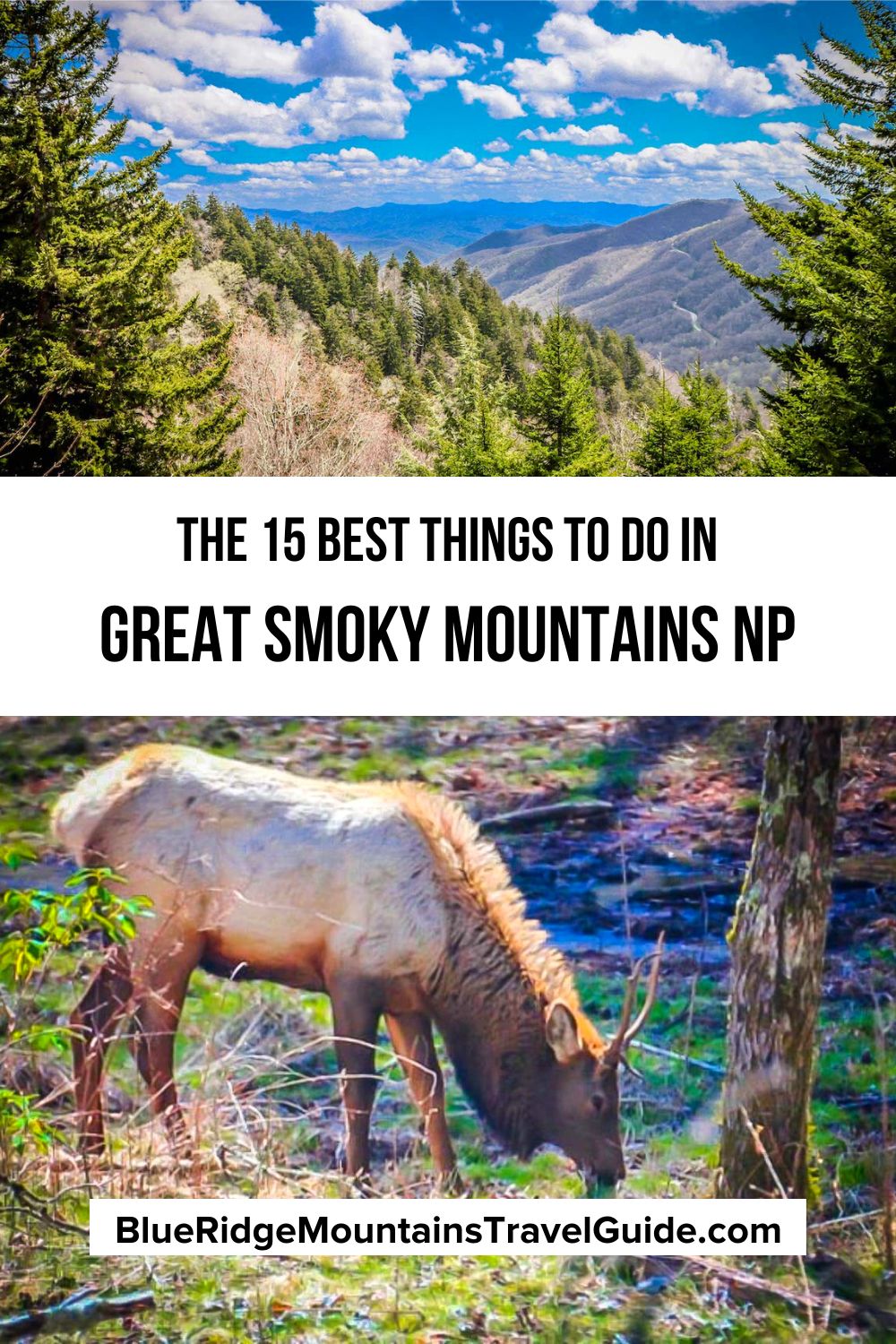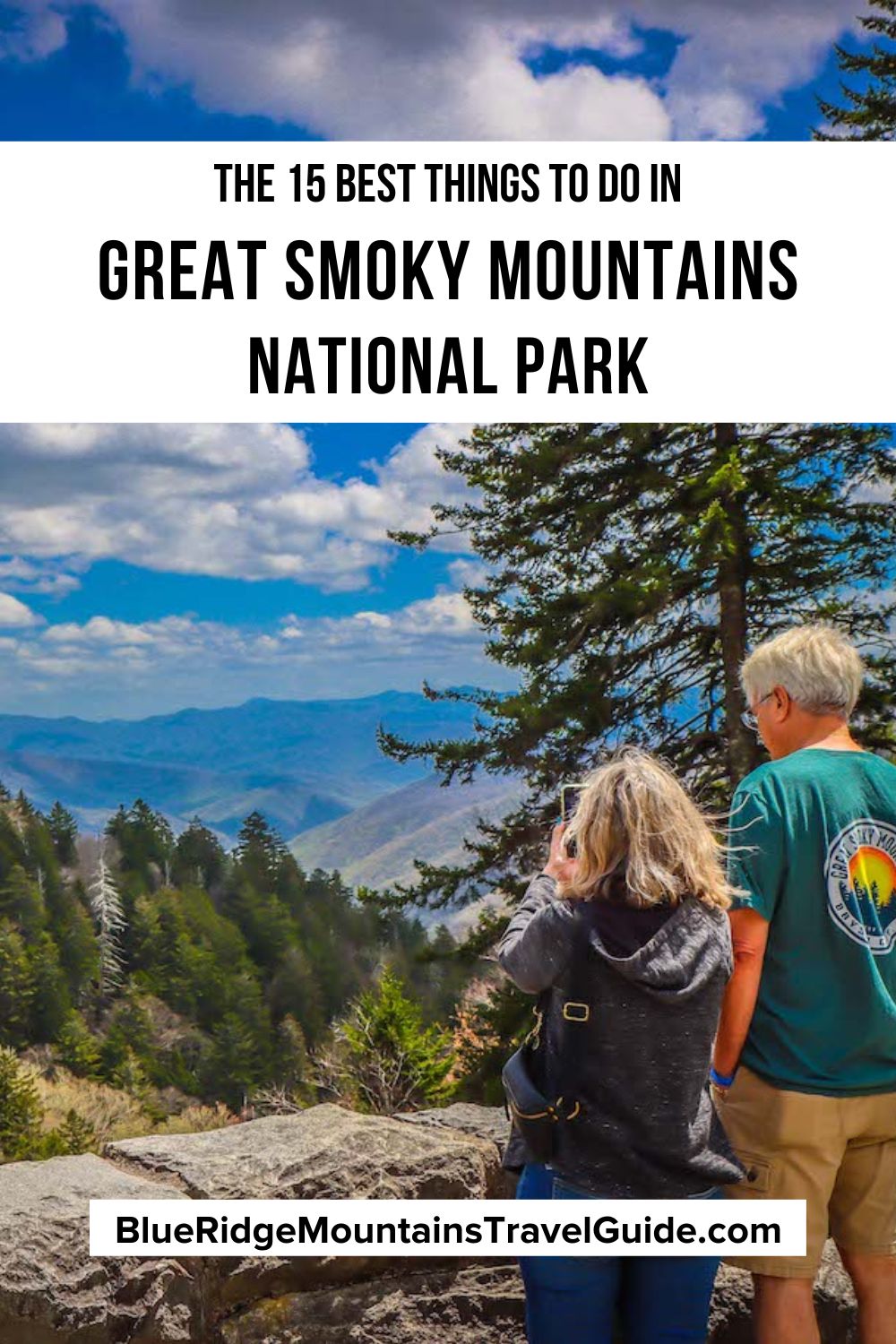[Updated Sept 19, 2024]
Straddling the boundary of North Carolina and Tennessee, Great Smoky Mountains National Park encompasses over 500,000 acres and is the most visited of all the U.S. National Parks.
Part of it is located in the Qualla Boundary of the Eastern Band of Cherokee people, who occupied the territory prior to the 1830s Indian Removal Act and the Trail of Tears.
The park was chartered by Congress in 1934, and officially dedicated by Franklin D. Roosevelt in 1940. It was the first of the U.S. National Parks ever to have costs covered by federal funding.
GSMNP was designated a UNESCO World Heritage Site in 1983, and it became an International Biosphere Reserve 5 years later. It is renowned for its biological diversity and its historic structures.
The park has three main entrances in Cherokee NC, Gatlinburg TN, and Townsend TN, and it remains open 24 hours a day, 365 days a year.
Many of the best Smoky Mountains attractions are located within the park’s boundaries, and many of the most popular things to do in the Smoky Mountains involve exploring its magical landscape.
The most popular Smoky Mountains activities include backpacking, watching wildlife, hiking to waterfalls, long-distance cycling, and visiting its world-class campgrounds.
Read on for our guide to the 15 best things to do in Great Smoky Mountains National Park.
READ MORE: The 15 Best Things to Do in Cherokee NC & the Qualla Boundary
Things to Do in Great Smoky Mountains National Park
- Hike the Appalachian Trail
- Explore Cades Cove
- Spotting Elk in Cataloochee Valley
- Challenge Yourself to the Chimney Tops Trail
- Climb Kuwohi (Formerly Known as Clingmans Dome)
- Walk to the Deep Creek Waterfalls
- Dive into Fontana Lake
- Tour Mingus Mill
- Visit Oconaluftee Visitor Center & Mountain Farm Museum
- Gaze at Vistas from Newfound Gap Overlook
- Follow the Road to Nowhere
- Driving Roaring Fork Motor Nature Trail
- Stop in at Sugarlands Visitors Center
- Spelunk in Tuckaleechee Caverns
- Camp in the USA’s Most Visited National Park
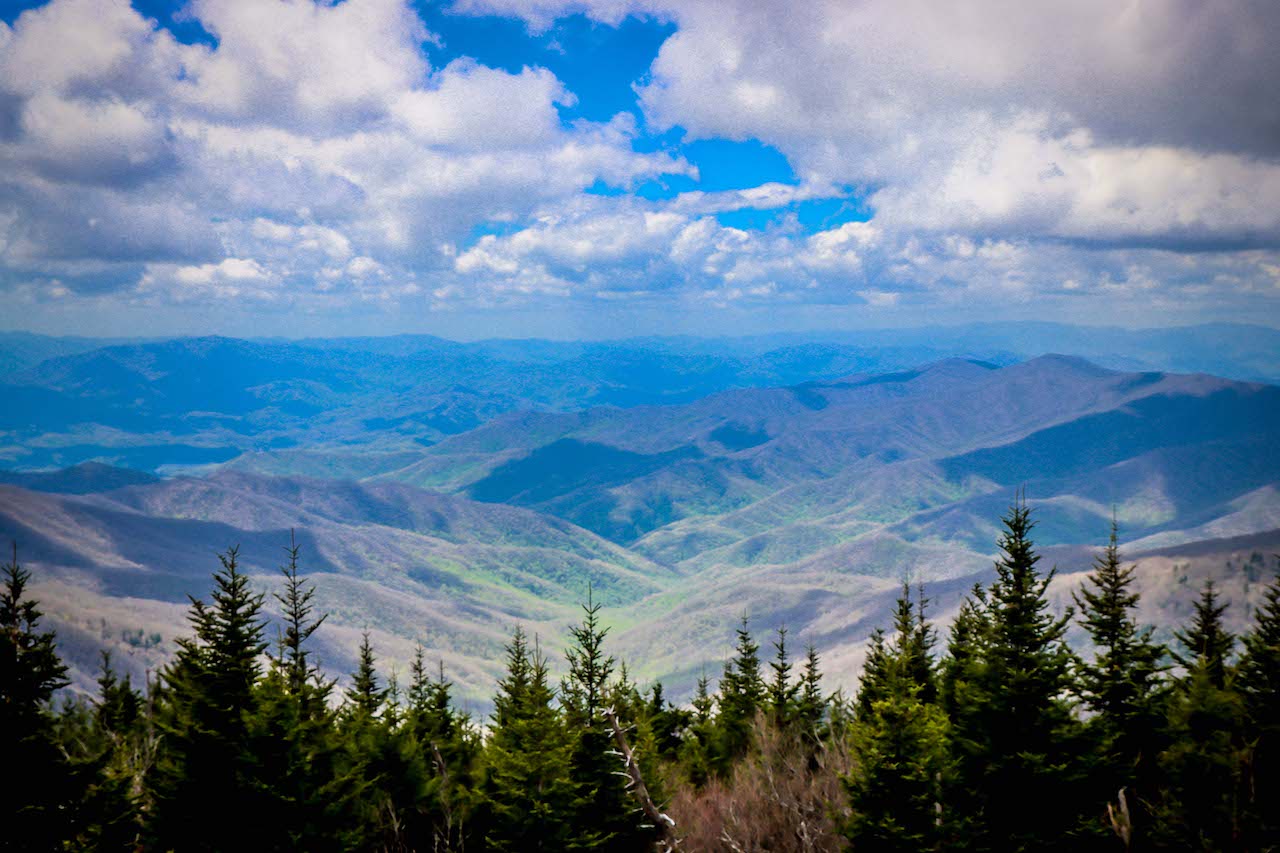
Great Smoky Mountains National Park Info
ADDRESS: 107 Park Headquarters Road, Gatlinburg TN 37738
PHONE: 865-436-1200
GSMNP CAMPGROUND RESERVATIONS: recreation.gov
GSMNP MAP: PDF
ENTRY FEES: None
WEBSITE: https://www.nps.gov/grsm/index.htm
Smoky Mountains Attractions
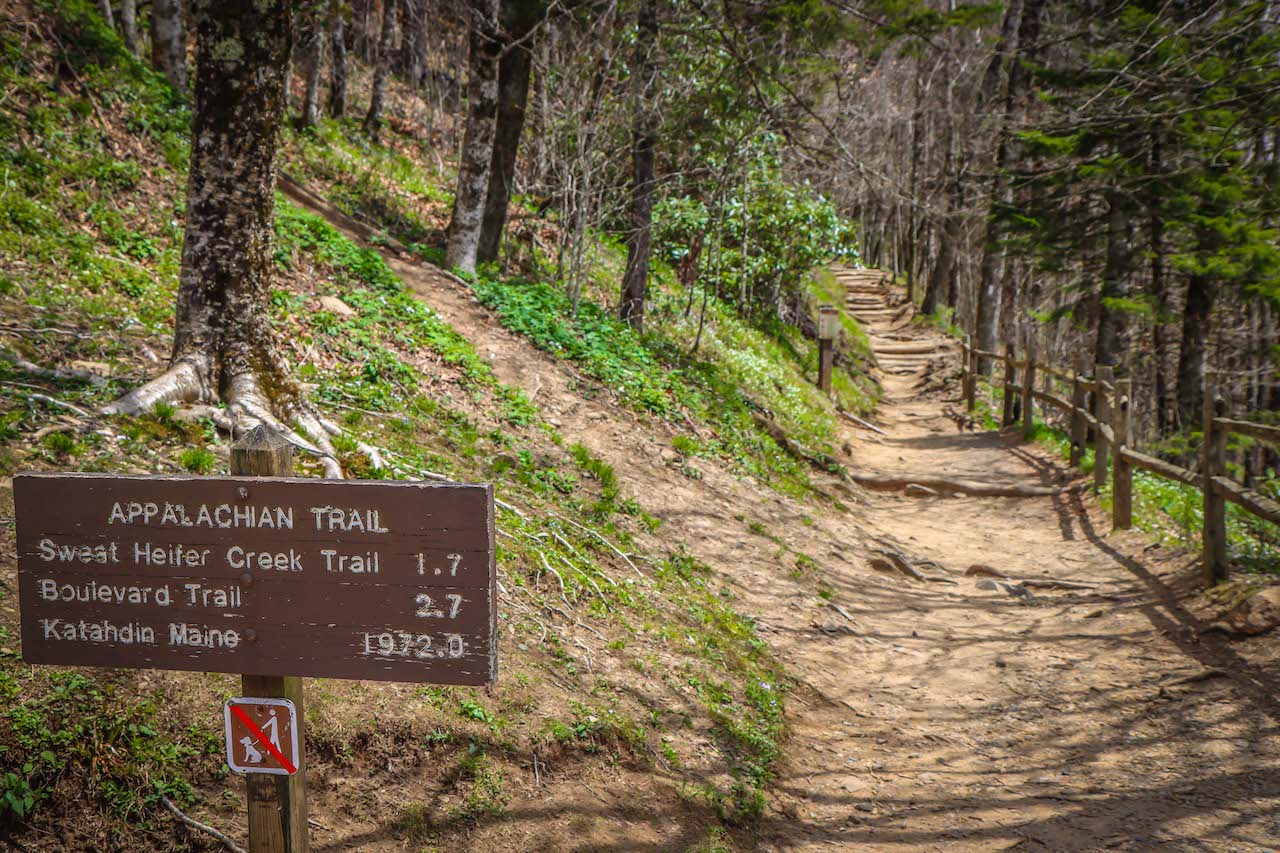
1. Hike the Appalachian Trail
The Appalachian Trail provides first-rate hiking in Great Smoky Mountains National Park.
Around 72 miles of the AT are located within the park, taking hikers through the deep wilderness as well as to some of the park’s major attractions.
Day-hikes on the Appalachian Trail do not require permits, but thru-hikers and backcountry campers in GSMNP will need permits.
There are 12 Appalachian Trail shelters within the park, starting at Mollies Ridge near Fontana Dam and ending at Davenport Gap, exiting the park in the northeast.
Some of the most popular sections of the AT in the park involve hiking from Newfound Gap to Charlies Bunion, and from Clingmans Dome to Newfound Gap.
READ MORE: The 7 Best Hikes on the Appalachian Trail in North Carolina

2. Explore Cades Cove
Cades Cove is an 11-mile road that circles a lush, fertile valley. It takes roughly 3 hours to tour, and possibly more for those who want to get out for a bit of exploration on foot.
Historically, Cades Cove was a prime hunting ground for the Cherokee people until it was settled by Europeans in the early 1800s.
The area still has lots of wildlife (including Black Bears) and a wide variety of historic Appalachian buildings, including some log cabins that date back to the 1800s.
Popular spots along the loop are Abrams Falls (a 5-mile hike), the Cable Mill historic area, and Cades Cove Campground.
The park offers vehicle-free access to the loop every Wednesday from early May to late September, which makes for a great cycling route!
READ MORE: The 15 Best Blue Ridge Parkway Hotels & Cabin Rentals in NC & VA
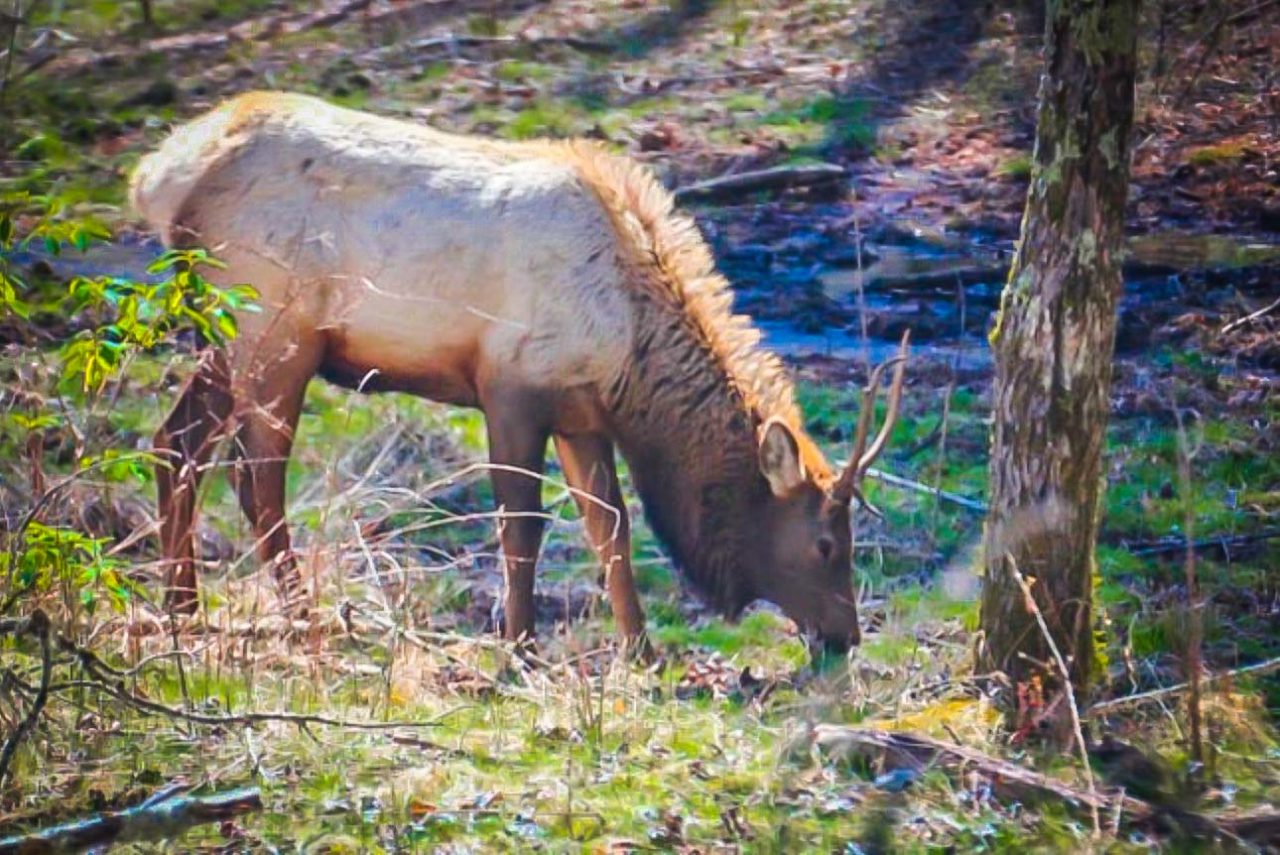
3. Spotting Elk in Cataloochee Valley
Like Cades Cove, the Cataloochee Valley features a fantastic collection of historical structures and great open meadows for spotting the park’s diverse wildlife.
Located near Maggie Valley and Waynesville NC and surrounded by dramatic 6,000-foot mountains, the valley can be visited via auto tour (there are self-guiding booklets available).
Cataloochee is part of a Smoky Mountains project to reintroduce Elk to the region. In 2001, 52 Elk were released there, and the herd (now at 200+ animals) is regularly seen in the valley.
The Cataloochee Valley also offers primitive camping, hiking, and trout streams for fishing.
Top hiking trails in the area include the Boogerman Trail and the Little Cataloochee Trail.
READ MORE: The 15 Best Things to Do in Waynesville NC & Haywood County
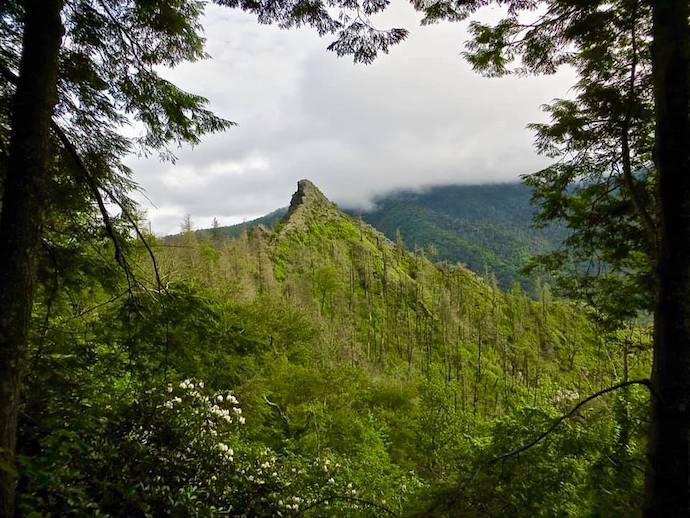
4. Challenge Yourself to the Chimney Tops Trail
The Chimney Tops pinnacles were recently damaged by fire, and the last 1/4-mile of the trail has been temporarily closed to the public due to safety issues that occurred in its wake.
However, the Chimney Tops Trail is still recognized as one of the most popular hiking trails in the Smoky Mountains.
It’s a 3.5-mile round-trip trek that has a huge 1,400-foot elevation change.
So naturally the steep trail is considered fairly strenuous, but the jaw-dropping vistas from the summit make the hike more than worth the trouble.
The trailhead for the Chimney Tops Trail is located along Newfound Gap Road, about 7 miles from the Sugarlands Visitor Center.
READ MORE: The 15 Best Cabins in Cherokee NC for Rent
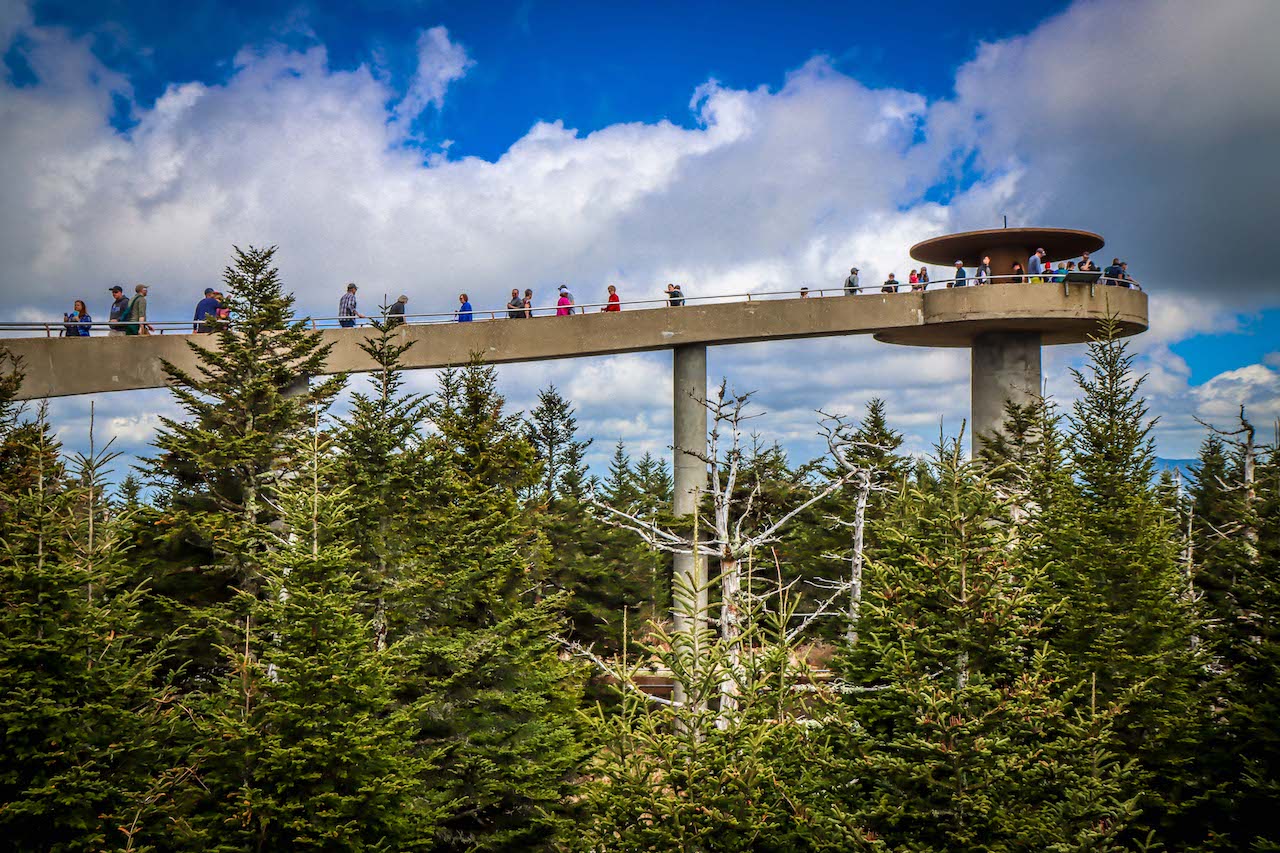
5. Climb Kuwohi
Formerly known as Clingmans Dome, Kuwohi (pronounced koo-WHOA-hee) is the tallest mountain in Great Smoky Mountains National Park, and should definitely be considered a must-see.
Its name was officially changed on Sept 18, 2024, after a formal request by the Eastern Band of Cherokee Indians. Kuwohi has always been a sacred place for the Cherokee People, and is the highest point within their traditional homeland.
The peak of Kuwohi is 6,643 feet high, making it the third highest mountain east of the Rocky Mountains (after Mt. Mitchell at 6,684 feet and Mt. Craig at 6,647 feet).
It’s possible to hike the Appalachian Trail to reach the mountain’s summit. But most visitors drive to the summit parking lot and walk the last half-mile uphill on a paved path.
There’s an observation tower at the summit of Kuwohi that provides spectacular views. But note that it can get crowded on weekends, especially when the fall colors start to peak.
Clingmans Dome Road is 7 miles to the parking lot, and it can be accessed via Newfound Gap Road.
READ MORE: Fall in North Carolina: 20 Great Places to See Fall Colors in NC
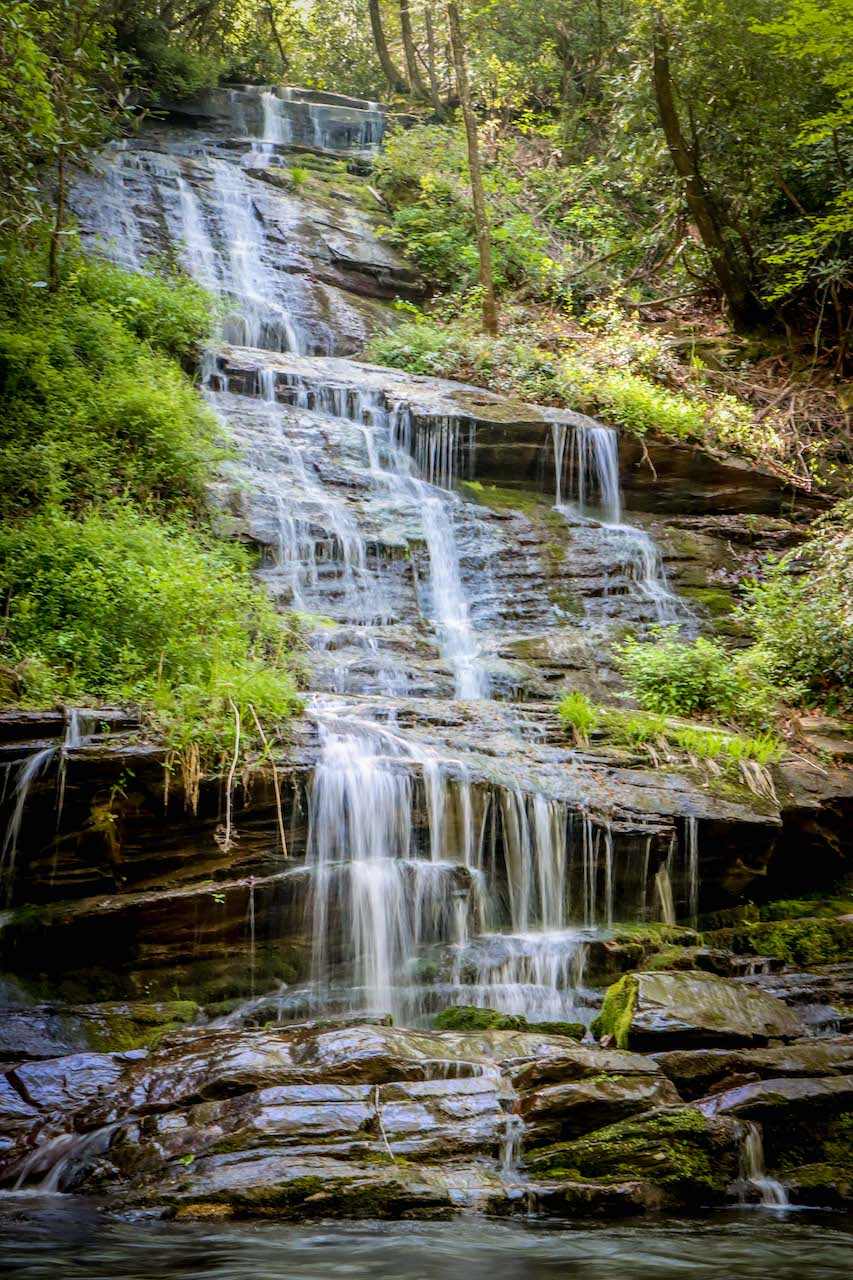
6. Walk to the Deep Creek Waterfalls
Located in Bryson City NC, the Deep Creek section of GSMNP is extremely popular for its stunning, easily accessed waterfalls and tubing opportunities.
The 2-mile Deep Creek Trail loop leads to Juney Whank Falls, Tom Branch Falls, and Indian Creek Falls. For our money, it’s one of the biggest ROI hiking trails in the Smoky Mountains .
There are several river tubing companies located just outside the park’s Deep Creek entrance. Tubers can float down the rapids of Deep Creek, past the waterfalls, and back to the rental office.
It’s a unique experience amongst the myriad Smoky Mountains activities.
Deep Creek also has a nice family-friendly campground, as well as several backcountry camping sites. Fishing and picnicking are also popular here.
READ MORE: Hiking the Deep Creek Trail to 3 Waterfalls in Bryson City NC

7. Dive into Fontana Lake
The southwestern boundary of Great Smoky Mountains National Park is Fontana Lake, one of the most beautiful lakes in North Carolina.
The lake was formed by the Little Tennessee River and Fontana Dam, the tallest concrete dam in the Eastern US.
The reservoir has over 200 miles of shoreline and occupies nearly 12,000 acres. It’s controlled by the Tennessee Valley Authority, and bordered by the Nantahala National Forest.
The Appalachian Trail actually goes right over the Fontana Dam, and the popular lake is open to boating, fishing, and other aquatic activities.
If you’re looking to spend a few days there, Fontana Village is a year-round resort with cabins and campgrounds, as well as a marina with boat rentals.
READ MORE: Camping in Nantahala National Forest (Campgrounds & Backcountry)

8. Tour Mingus Mill
Located about a 1/2-mile into the park from the Oconaluftee Visitor Center in Cherokee NC, Mingus Mill is a fascinating stop for Appalachian history buffs.
The historic grist mill, which is believed to be the second one on the site, was constructed in 1886.
Mingus Mill is powered by Mingus Creek, and the waterwheel is still turning today. A miller will even demonstrate and explain the process for curious visitors.
The mill is extraordinarily photogenic, including the historic gristmill building as well as the millrace, which channels water from the creek to the waterwheel.
You can also purchase some of the products made at the mill, including cornmeal, flour, locally made jams and jellies, and other food items.
READ MORE: 10 Best Cherokee NC Restaurants for Breakfast, Lunch & Dinner

9. Visit Oconaluftee Visitor Center & Mountain Farm Museum
The Oconaluftee Visitor Center and Mountain Farm Museum are located a couple of miles from the town of Cherokee NC, along the banks of the Oconaluftee River.
The Visitor Center is the newest of the GSMNP collection and offers park information, restrooms, souvenirs, and historical exhibits.
Visitors can also explore the Mountain Farm Museum, a free living history attraction that features several old log cabins, a barn, as well as a smokehouse, apple house, and corn crib.
You can also access the Oconaluftee River Trail from here, which offers exceptional views of the river, wildflowers, and the park’s ubiquitous Elk.
READ MORE: Exploring Oconaluftee Indian Village & Visitor Center in Cherokee NC
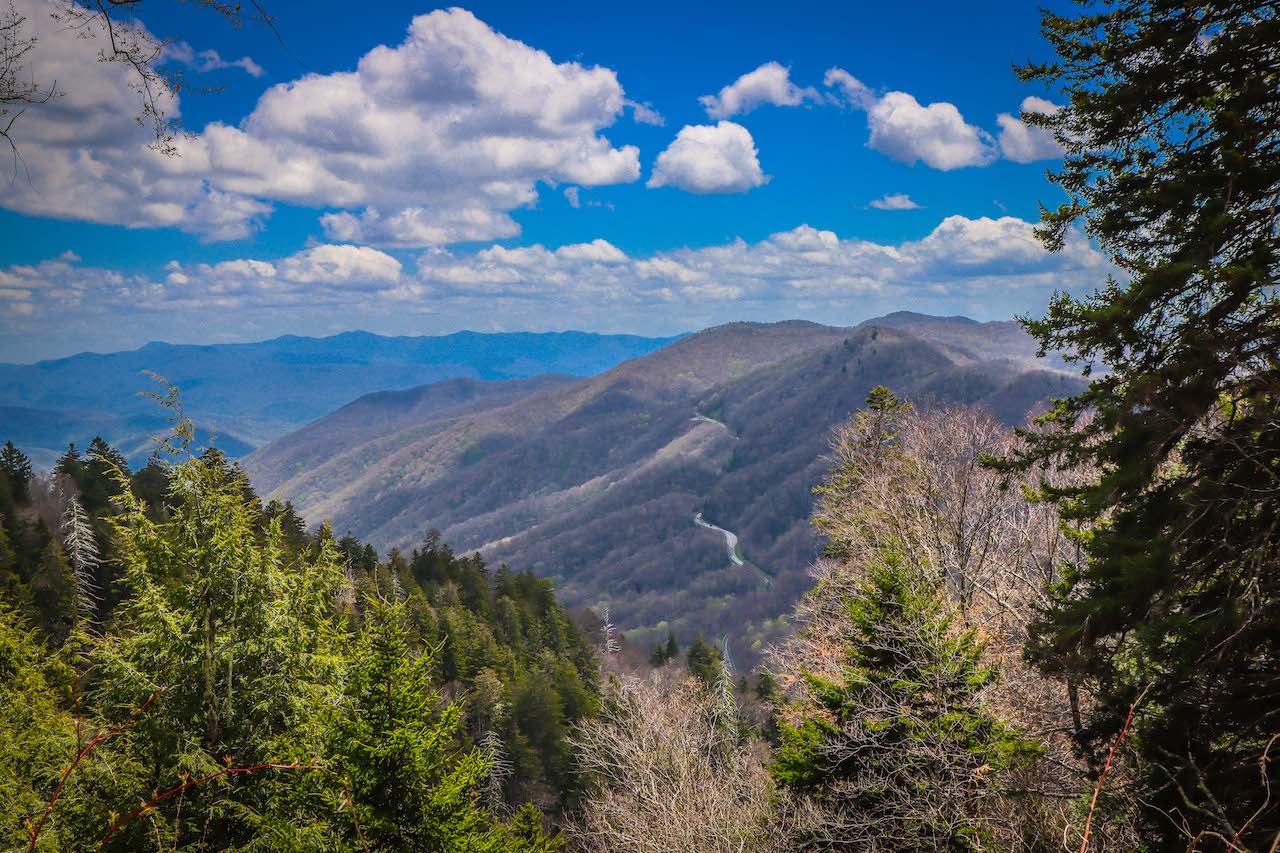
10. Gaze at Vistas from the Newfound Gap Overlook
The lowest pass through the Great Smoky Mountains, Newfound Gap is just over 5,000 feet in elevation.
It was recognized as such in the late 1870s, replacing Indian Gap, which was previously used to cross over the North Carolina mountains.
Newfound Gap Road features several ecosystems as it ascends and descends into the lowlands. It’s also considerably cooler than areas below, and receives much more annual snow (about 69 inches).
Newfound Gap Overlook is centrally located in the national park, around 15 miles from both the Sugarlands Visitor Center (near Gatlinburg) and Oconaluftee Visitor Center (near Cherokee).
The overlook has a large parking area, restrooms, walking paths, and the Rockefeller Memorial, with the Appalachian Trail running right through it.
READ MORE: The 10 Best Bryson City Restaurants for Breakfast, Lunch & Dinner

11. Follow the Road to Nowhere
Officially called Lakeview Drive, the Road to Nowhere is a scenic route for cars or bikes that goes about six miles into Great Smoky Mountains National Park.
The drive offers lovely views of Fontana Lake along the way, with several overlooks worth stopping for.
There are also a number of great hiking trails accessible from it, including the Goldmine Loop and the Lakeshore Trail.
The road reaches a graffiti-covered tunnel, and then it stops. It was meant to replace Hwy 288 when Fontana Lake was created, but construction ended due to costly environmental issues.
Eventually, the US Department of Interior had to pay $52 million dollars to Swain County NC after reneging on its promise to build the road.
READ MORE: The 15 Best Things to Do in Bryson City NC & Swain County

12. Driving Roaring Fork Motor Nature Trail
Roaring Fork is a lively mountain stream that ducks and dives down the mountainside in GSMNP.
The Roaring Fork Motor Nature Trail is a one-way, 5.5-mile route that runs around the area.
This route is very special because it has rare old-growth forests and a number of historic sites, including the Ogle farmstead.
Additionally, the parking areas for visiting Rainbow Falls, Grotto Falls, and the Place of a Thousand Drips are also along this beautiful drive.
As with the Cataloochee Valley and Cades Cove, there’s an inexpensive booklet available for self-guided drives along the Roaring Fork Motor Nature Trail.
READ MORE: The 50 Best North Carolina Waterfalls to Visit
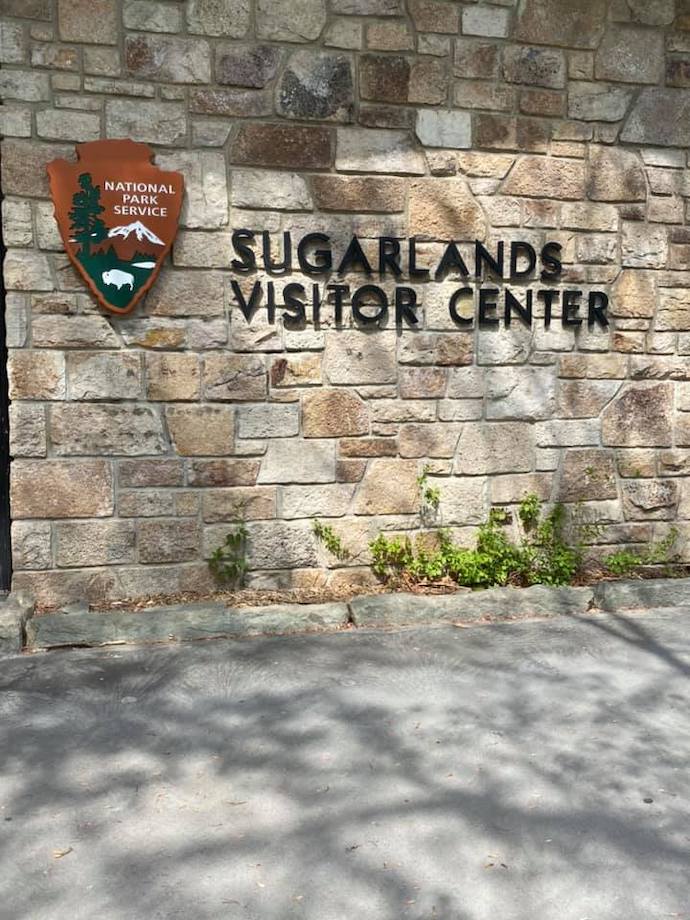
13. Stop in at Sugarlands Visitors Center
The Sugarlands Visitors Center is the one nearest to Gatlinburg TN, and it has several attractions to enjoy at the north end of the park.
The visitors center has a short movie about the park that’s worth watching, as well as nature exhibits, park information, and a gift shop.
Around the center, you’ll find several nice walking paths and trails, including access to Cataract Falls, the Fighting Creek Nature Trail, and the Gatlinburg Trail.
The Sugarlands Visitor Center is opened daily except on Christmas Day, opening at 9AM and closing around dusk (closing times change for each season).
READ MORE: 40 Facts About the History of the Banjo (From Africa to Appalachia)

14. Spelunk in Tuckaleechee Caverns
Famed for being “the greatest sight under the Smokies,” Tuckaleechee Caverns boasts the distinction of being accessed from outside Great Smoky Mountains National Park, but burrowing in below it.
Located near the Townsend TN entrance, the caverns actually originate at the White Oak Sinks inside the park.
The cave system has a cavern nearly the size of a football stadium, and it’s home to Silver Falls, the tallest underground waterfall in the Eastern U.S.
Tuckaleechee Caverns are privately owned, and admission costs $22 per adult and $10 for kids ages 5 to 11 to explore. Kids under age 5 get in free.
The caverns get nearly 10,000 visitors a year, and have been open to the public since 1953 (with a short stint in 1931 that ended due to the Great Depression).
READ MORE: The 7 Best Caves & Caverns in North Carolina

15. Camp in the USA’s Most Visited National Park
While there are plenty of places to stay on the outskirts of Great Smoky Mountains National Park, there’s nothing quite like camping in the most visited of all U.S. National Parks.
There are several large, fully developed campgrounds in the park, including Cades Cove, Cosby, Deep Creek, Elkmont, Look Rock, and Smokemont.
Smaller campgrounds in GSMNP include Abrams Creek, Balsam Mountain, Big Creek, and Cataloochee.
There are also group campgrounds and horse camps accessible by car, as well as tons of backcountry campsites and shelters that require hiking.
Studies show that there are two Black Bears for every square mile in the park. So campers are advised take every precaution to avoid dangerous interactions. –by Jonathon Engels; featured photo of Newfound Gap by Bret Love & Mary Gabbett


